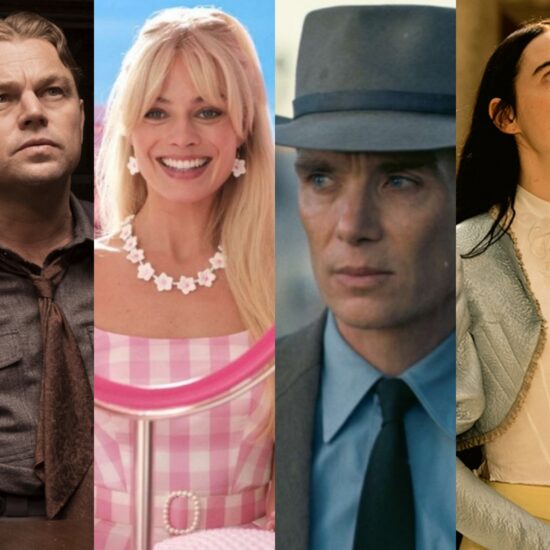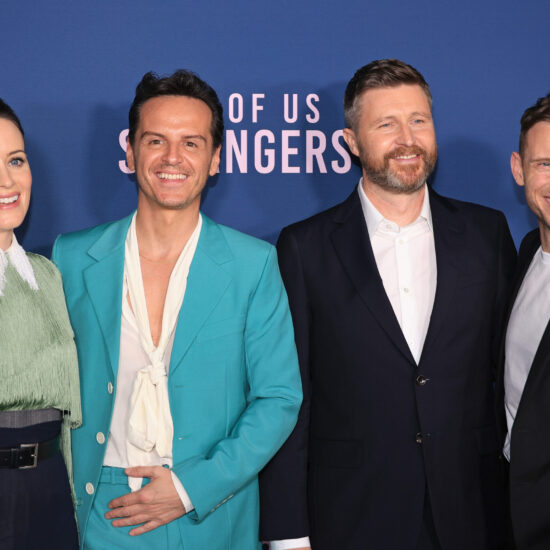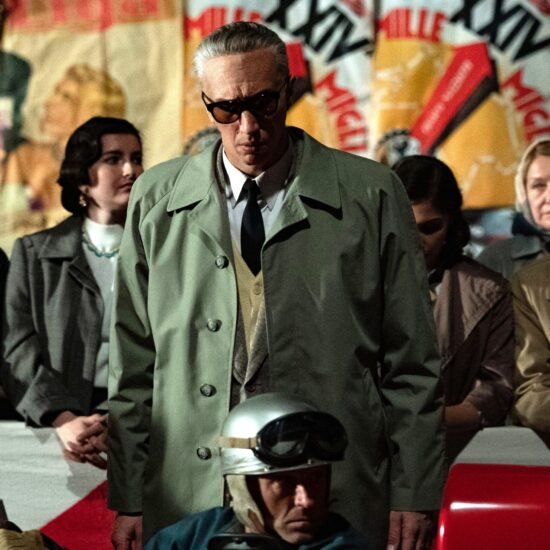
“Lyrical” is often used to describe poet-turned-filmmaker Raven Jackson’s first feature film, “All Dirt Roads Taste of Salt.” Inspired by Terence Malick and cinematographer Emmanuel Lubezki’s collaboration on “Tree of Life,” Jackson and cinematographer Jomo Fray wanted to make a film that had a unified aesthetic that came through process and principles rather than rehearsal and refining of the camera work.
“Jomo and I started off talking about the emotionality of the film before we were thinking visually,” Jackson told IndieWire. “What feelings we were aiming to evoke with the images. And eventually Jomo had a suggestion to do a manifesto.”
Before shooting every day of production on the decades-spanning exploration of a woman’s life in the South, Jackson and Fray read aloud their 12-point manifesto. Although the collaborators had a shot list and a visual language for the film, the manifesto served as a way of getting into the mindset of being present on set — staying open to moments, gestures, nature, and images that evoked emotion and ideas of the film.
Below, Jackson and Fray walk IndieWire through their manifesto. The transcript has been lightly edited for clarity.
1. Stay elemental in the approach
During preproduction, Fray tested a number of lenses, deciding between different cameras and perforation (which 35mm film stock to use) and designing how to light the film. These decisions were ultimately guided by this need to “stay elemental.”
Fray: I ended up scaling back, simplifying some of my tools as a way to say, “OK, I don’t want the set to ever be waiting on camera or gear.” I don’t want the set to ever really be waiting on lighting. So I’m going to build a process that is elemental by choice.
I did most of the lighting with a set of mirrors, kind of riffing off of Christian Berger, [Michael] Haneke’s DP’s work, and using natural light, kind of riffing off of [cinematographer] Nestor Almendros, thinking about ways to surround buildings with as many 4-by-4, and 2-by-2 mirrors, ricocheting the light around. This concept of staying elemental meant to use and modulate things around me rather than maybe traditionally lighting it.

2. Remember water, remember wind
Fray: This is a good example of how the manifesto was interpretative and could mean a few different things. For example, when we were first writing the manifesto, we talked about wanting the handheld [camera] to feel like water, to be able to flow in a space, and if a change in conditions might be happening, to flow and bend around that like water or the wind.
I think it also meant something we took from watching [Russian director Andrei] Tarkovsky films throughout the prep process. We were trying to [figure out] what is it about some of [Tarkovsky’s] compositions that always feel so alive. One of the things we pointed to is the way that he has natural elements deep in the frame — the tree sways, a curtain is moving, water is trickling out of the tap in the background of the shot — that just imbues the image with a feeling.
This manifesto point also speaks to the ways in which we should always be fascinated by nature and served as reminder we should let our interest in that wonderment kind of just spin out. I’m sure it’s evident in the film that we were really inspired by Terrence Malick, and in particular in [cinematographer] Emmanuel Lubezki and Malick’s approach, and creating a manifesto for “Tree of Life.” Something I love about that work and their collaboration is that they feel as interested in a close-up on an actor as they do a fish gasping for air. Those two things are equally poetic and equally powerful, and also both attack the subconscious senses of the audience.
3. “The wound is where the light gets in” — embody it in every frame
“The wound is where the light gets in” is from Rumi, a philosopher and poet.
Jackson: I talked about that Rumi quote a lot, not only with Jomo but all the department heads. After the dance scene, you see Mack [Charleen McClure] at the church, and then you see her hands, and there’s a golden light coming down. That was a found moment from a test shoot. It’s about all the different things light can communicate and how it can be complex, it can be multiple things, not just one, and that line for me speaks to that. When we would read things like that out [before shooting each day], it was a reminder to be available for those moments of magic.

4. Stay close, stay wide
Fray: We love the feeling of cutting from a macro shot to an ultra-wide. Stay close, stay wide is helping us remind ourselves that we love space, we love asymmetry, we love headroom, but we also love really tactile feelings, and don’t be afraid to be in an ultra-wide for something that’s emotional, and don’t be afraid to be in a macro shot for something that’s emotional. [Cinematographer] Gordon Willis talked about [how in] “The Godfather” Francis Ford Coppola always wanted to put the camera in the exact spot no one else would ever expect. I feel like Raven and I had a similar approach here too.
5. Speak in slant rhymes
Jackson: There are a lot of slant rhymes in the film. Mack and Wood [Reginald Helms Jr.] at the grocery store, how their hands are embracing, and how that scene is a slant rhyme with them on the road at night. That embrace, and their hands on each other’s backs, also speaks to Isaiah [Chris Chalk] and Evelyn [Sheila Aim] dancing. [These moments in different scenes] speak to each other, and thus speak to these relationships, how they change and evolve. And also, in some instances, the different generations of people, which is another layer telling us the story, another texture coming through these slant rhymes.
6. Embody a raw grace
Fray: We wanted to be graceful, but never too graceful. We wanted to be poetic but never feel like we were so focused on poetry. It gets back to that same idea of being present on set, being present to the performance. I think of the idea of “embody a raw grace” like we are playing music, we wanted to play somewhere between jazz and punk. It isn’t necessarily that it is only melodic, we want to be disruptive. We want it to have some aspects of Alice Coltrane in it.

7. Strive to be in an unending state of nowness within the constant movement of time
The narrative of “All Dirt Roads Taste of Salt” stretches over decades, with younger actors playing Mack (Kaylee Nicole Johnson), Josie (Jayah Henry), and Wood (Preston McDowell) as children, and was written and edited (Lee Chatametikool) to constantly weave between different time periods.
Jackson: The more I developed this project it became clearer to me that all of these moments are happening now. I wasn’t interested in giving a clear marker of what year it was, or even place. I know it’s Mississippi, and you know from a sense that it’s the South, but I’m never saying this is Mississippi. I wanted to create that experience of wading through a life. I knew I wanted it to be a fluid viewing experience. Rather than chapters, I wanted it to feel of a piece. This meant that visually there were no lines of demarcation between periods, they were shot the same way.
8. To be tactile is to have details
Fray: We loved getting in really, really close and feeling the texture of someone’s skin. Raven said from the beginning with this project, she wanted to feel and smell the image. “To be tactile” is reminding us don’t forget about macro lens, don’t forget about finding the texture, don’t be afraid to repeat images and motifs. In thinking about Mack’s own life, it is these repeated instances, these repeated conversations, and also these repeated visual gestures.
9. Landscape as character
Jackson: These characters are very close to nature, the clay dirt aspects of the rainwater [from the film’s title], and so showing reverence to that was very important, and allowing these characters to exist within it. I think of that wide of older Mack at the river with the trees, she’s of this place, their lives are intertwined with nature, their lives rhyme with it — the seasons and the seasons of their lives.

10. Compose in depth
Jackson: This line was a reminder when I’m blocking to challenge myself to think of the z axis, to look in a different way, and ask, “Am I pushing myself enough?” I discovered for myself how much I love a tableau in making this film.
Fray: I think we might even have stolen this from Malick and Lubezki because something Raven and I really loved when we saw their work is that you could pause a frame in “Tree of Life” and you see the multiplicity of life that’s happening in a single image. I take “compose in depth” to remember the fullness of these people’s lives, don’t just shoot an image that works for the movie, and moves it forward, put a little light on in the back room, maybe have someone walk through because this is still a living breathing space. It does something to the frame. It feels immersive. I always try to think of the edges of my frame. Are the edges of my frame gesturing towards a grander life that’s outside of the frame?
11. Be evocative above all else
Fray: A reminder, especially every single day that we go to set, that we aren’t trying to get a movie in the can, we’re trying to come back with images that give us goosebumps. Images that bring us to other places, other times, other bodies.
We told ourselves every single scene, we want to leave with at least one image that is super evocative. Something that when we look at it, it transports us. It’s going back to that Walter Murch thought that emotionality is No. 1. It doesn’t matter if a shot jumps the [180-degree] line. If we’re ever balancing between, “Well, I don’t know how [this shot] makes sense in the edit, but it’s super evocative.” The answer was always go for what is evocative.
12. Be in the moment—be present to the cinema on set
See 1 through 11.















